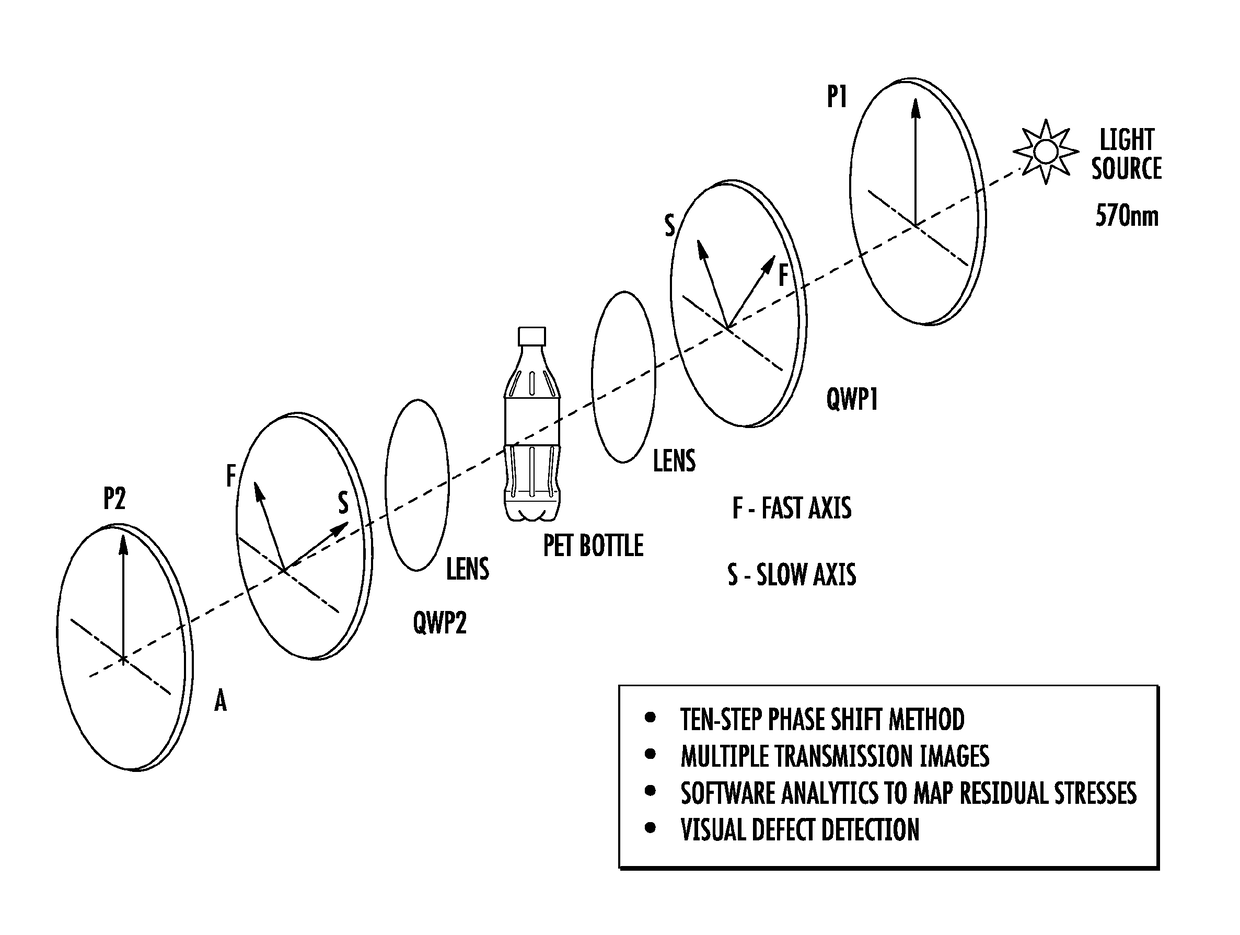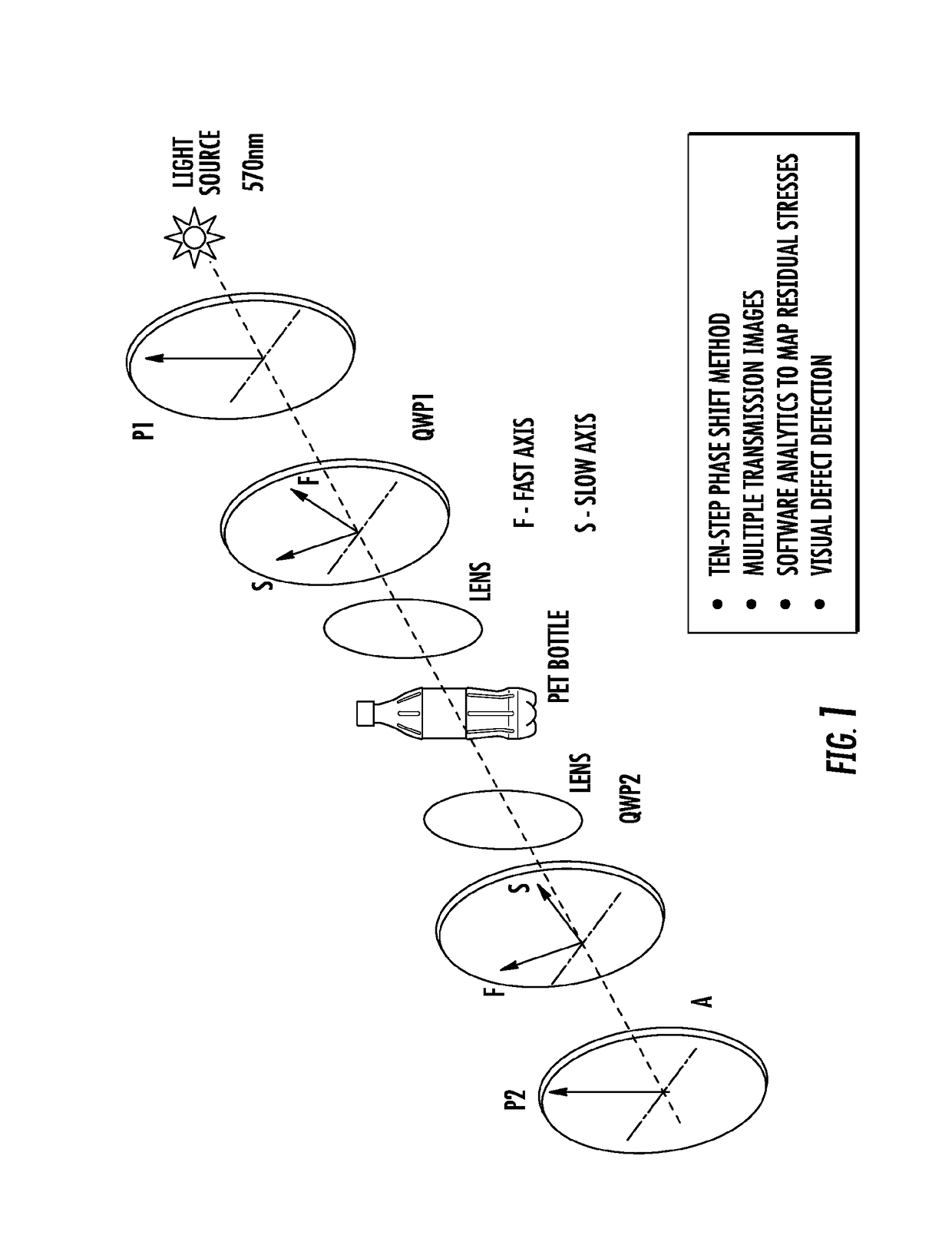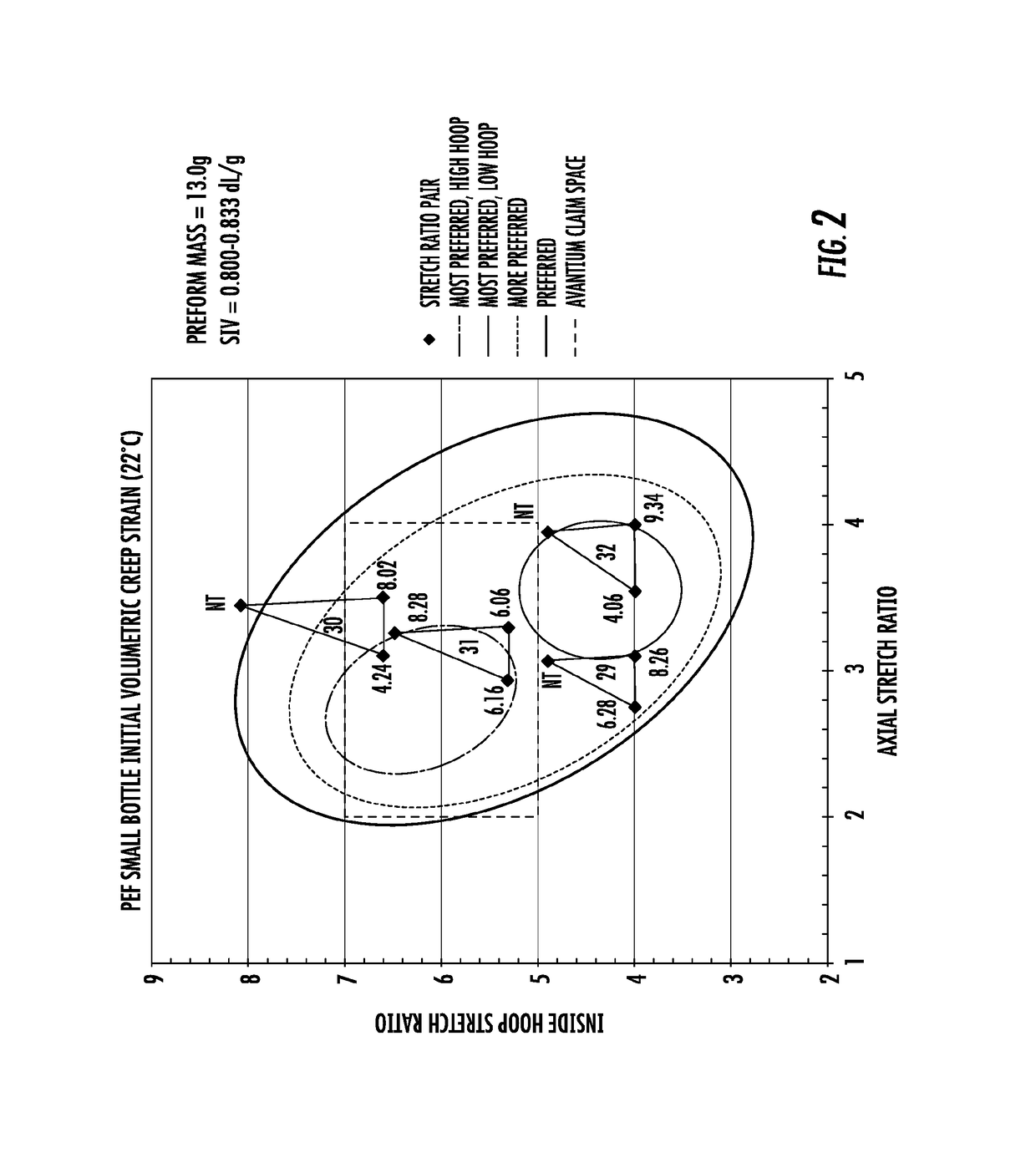Photoelastic characterization of residual stresses and stress distributions in injection molded preforms and stretch blow-molded bottle
a technology of residual stress and photoelastic characterization, which is applied in the field of photoelastic characterization of residual stress, can solve the problems of insufficient understanding of residual stress molded into a preform, inability to make quantitative numerical predictions regarding and general inability to understand the effects of residual stress molded into the preform on the reheat stretch blow-blown molding dynamics, so as to reduce or minimize the expected stress distribution in the blow-blown bottl
- Summary
- Abstract
- Description
- Claims
- Application Information
AI Technical Summary
Benefits of technology
Problems solved by technology
Method used
Image
Examples
example 1
on and Summary of Photoelastic Measurements on Selected Preforms and Stretch Blow-Molding Results for Bottles
[0071]Several sets of PET and PEF bottles and preforms that had been manufactured under varying conditions were analyzed using a white-light digital polariscope. This information was used to first determine the stress-optic coefficients, then residual stresses were analyzed and classified in all samples. Several stress states were observed across the samples including uni-axial, bi-axial and hoop stress. Small material features were identified and cataloged in the bottles.
[0072]For the specific polymer used to fabricate the preform, a biaxially stretched sheet was made and used for calibration. Stress optic coefficient calibration was undertaken, where the stress optic coefficient for a birefringent material was calibrated by applying known stress field using a beam subjected to pure bending. The beam sample is free from stress and the small value of residual stress can be ig...
example 2
tal Validation and Further Examples for PEF Co-Polyester Resins
[0081]In Order to Further Examine this Concept for PEF Copolyester Resins, Four Unique 13 g preforms were designed to achieve areal stretch ratios (areal stretch ratio=axial stretch ratio×hoop stretch ratio) ranging from 11 to 29 across three straight wall bottle designs, ranging in size from 10 oz. to 16 oz. Table 3 provides a summary of selected relevant preform and bottle dimensions.
[0082]Preform Injection Molding Procedure.
[0083]The PEF resin was dried a minimum of 48 hours at 140° C. under vacuum. Each preform tooling was installed on an Arburg 420 injection molding machine with a valve-gated hot runner end cap and a 35 mm general purpose screw configuration. The injection molding conditions were optimized to produce acceptable preforms with minimum molded-in stresses and no visual defects at the minimum melt temperature.
[0084]Reheat Injection Molding Procedure.
[0085]All bottles were blown on a Sidel SB01 lab reheat...
example 3
Combinations of Inside Hoop Ratios and Axial Stretch Ratios for PEF Small Bottles
[0113]Referring to FIG. 2 and FIG. 3, a graphic illustration of PEF small bottle (13.0 g) initial volumetric creep strain (22° C.) tabulated on the plot itself (FIG. 2) and shelf life (weeks at 22° C., determined by FTIR) tabulated on the plot itself (FIG. 3) that correspond to successful combinations of inside hoop ratios and axial stretch ratios for PEF small bottles are presented. The innermost ellipses correspond to more preferred high hoop (red) and low hoop (orange) embodiments. The lowest volumetric creep and the highest FTIR shelf life at 22° C. was derived for PEF using the equibiaxial preform design with a 4.00×4.00=16.0 (axial stretch ratio×hoop stretch ratio=areal stretch ratio) and the 10 oz. bottle mold. All of the PEF bottles regardless of size (namely, 10, 12, or 16 oz.), reheat stretch blow molded from the same preform design, exhibited similar deformation modes distributed across the n...
PUM
| Property | Measurement | Unit |
|---|---|---|
| thickness | aaaaa | aaaaa |
| thickness | aaaaa | aaaaa |
| volumetric creep strain | aaaaa | aaaaa |
Abstract
Description
Claims
Application Information
 Login to View More
Login to View More - R&D
- Intellectual Property
- Life Sciences
- Materials
- Tech Scout
- Unparalleled Data Quality
- Higher Quality Content
- 60% Fewer Hallucinations
Browse by: Latest US Patents, China's latest patents, Technical Efficacy Thesaurus, Application Domain, Technology Topic, Popular Technical Reports.
© 2025 PatSnap. All rights reserved.Legal|Privacy policy|Modern Slavery Act Transparency Statement|Sitemap|About US| Contact US: help@patsnap.com



